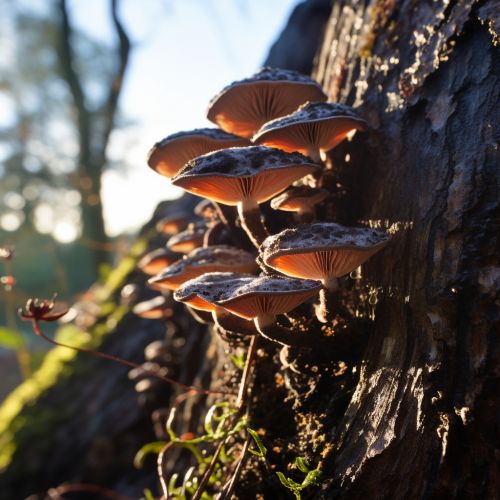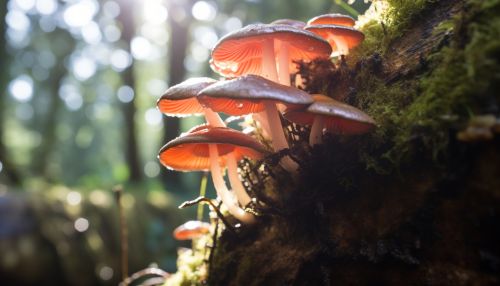Pleurotaceae
Taxonomy
The Pleurotaceae is a family of basidiomycete fungi that belongs to the order Agaricales. The family was first described by the German mycologist Julius Oscar Brefeld in 1888. The family name is derived from the Greek words 'pleuron', meaning side, and 'ous, otis', meaning ear, referring to the lateral attachment of the stem to the cap in many species.


Characteristics
Members of the Pleurotaceae family are characterized by their saprobic nature, meaning they obtain their nutrients from decomposing organic matter. They are primarily wood-decay fungi, playing a crucial role in the carbon cycle by breaking down lignin and cellulose in dead wood. The fruit bodies of Pleurotaceae fungi are typically fan or oyster-shaped with a lateral stipe, giving them their common name, oyster mushrooms.
Genera
The Pleurotaceae family includes several genera, among them are:
- Pleurotus: The most well-known genus in the family, Pleurotus includes species commonly known as oyster mushrooms. They are widely cultivated for their edible fruit bodies.
- Hohenbuehelia: This genus is characterized by its gelatinous spore-bearing structures, which are unique among the Pleurotaceae.
- Resupinatus: Species in this genus are small and typically have a resupinate (flattened against the substrate) fruit body.
- Sarcomyxa: This genus was formerly included in Pleurotus but was separated based on molecular data. It includes a few species of edible mushrooms.
Ecology and Distribution
Pleurotaceae fungi are found worldwide, inhabiting a wide range of ecosystems from tropical rainforests to temperate woodlands. They are particularly abundant in forest ecosystems, where they contribute to the decomposition of dead wood and the recycling of nutrients. Some species are also found on herbaceous substrates.
Economic Importance
Several species of Pleurotaceae, particularly in the genus Pleurotus, are cultivated commercially for their edible and nutritious fruit bodies. They are also used in the production of mycelium-based products and have potential in bioremediation efforts due to their ability to degrade various pollutants.
